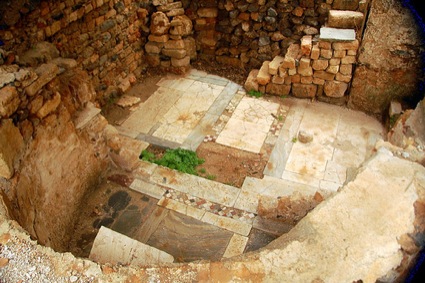Over and over again, I’ve read and been preached to about how the first century church was this wonderful apostle-led community and that it’s been going downhill ever since. If only we could just GET BACK to that. That’s what church should really look like. House church advocates, cell group people, a lot of people pull this one out. To be fair, some of them have a much richer understanding of this period and don’t hang out in nostalgia. But it happens often enough.

Wright, throughout this book, denounces this idea from various angles. Remember the book of Acts?
It is not surprising that Christianity developed in a multiplicity of ways. The ‘myth of Christian origins’, or in more vulgar language the ‘big bang’ theory of church origins, has been shown up as a later Christian fiction. A ‘pure’ period, when everyone believed exactly the same thing, lived in a community without problems or quarrels, and hammered out True Doctrine for the coming Great Church, never existed.
Though Acts is often regarded as an attempt to whitewash the early Christians, it must be judged singularly unsuccessful. The sin of Ananias and Sapphira, the dispute between Hebrews and Hellenists, the vacillating of Peter, the major division over circumcision, the fierce quarrel between Paul and Barnabas – even the heroes of Acts are shown emphatically to have feet of clay. The idea of early uniformity and stability owes more the Eusebius [4th century historian] and his successors than to a first-century writing; the reality was too close to be covered up.
At the same time, we must also resist the more subtle myths that crown in once we reject the facile one. If the early church was not a pure community, and to be imitated as such, no more can we assume that it was an early version of the ecumenical movement, and to be imitated as such.
-N.T. Wright, The New Testament and the People of God, p.452
Why do I even write this sort of thing down? More than anything, I want to see the church flourish, unhampered by the worldliness that has creeped into so much of what we do. What the “pure” church would really look like is important to me. It’s a big part of why I wanted to read this book. I just skipped ahead 350 pages to that part! I know the early church had it’s problems, but what clues are there about what they did right (Jesus-shaped things) that can be dug up for today? It’s important for me to find out.
